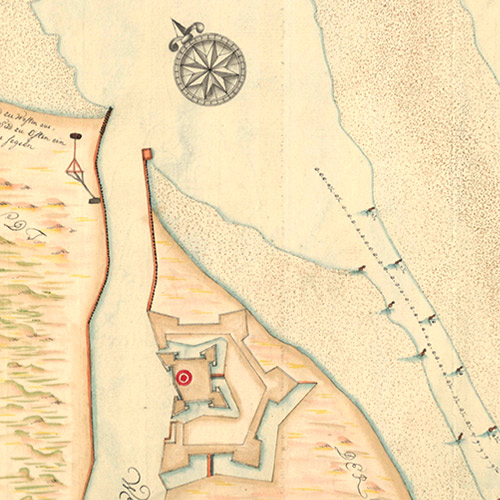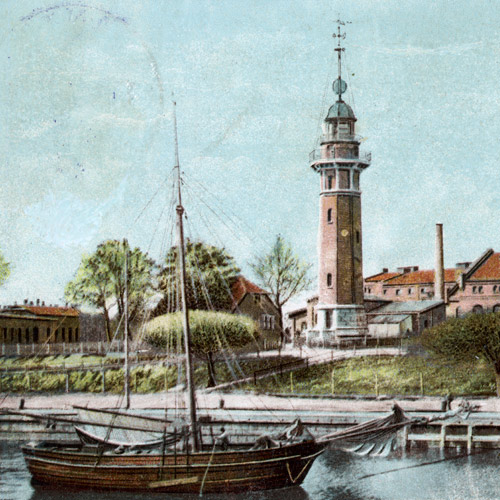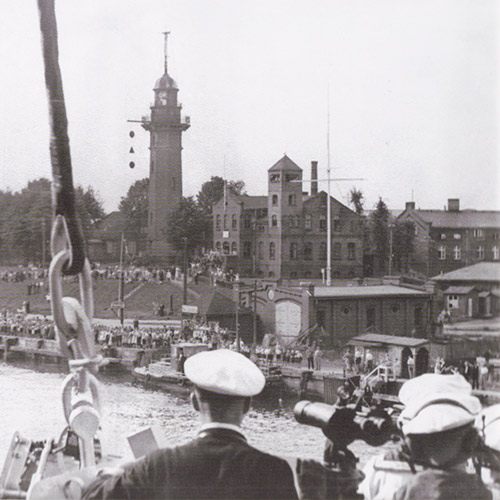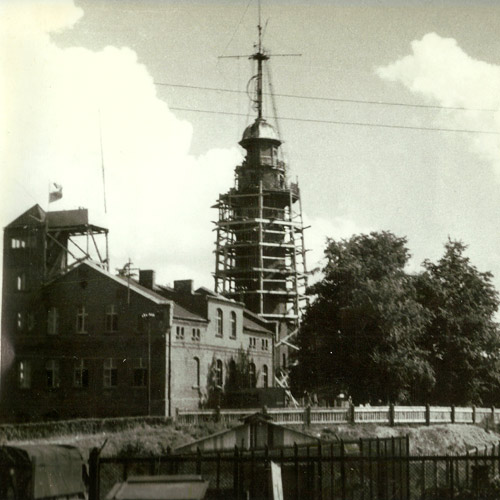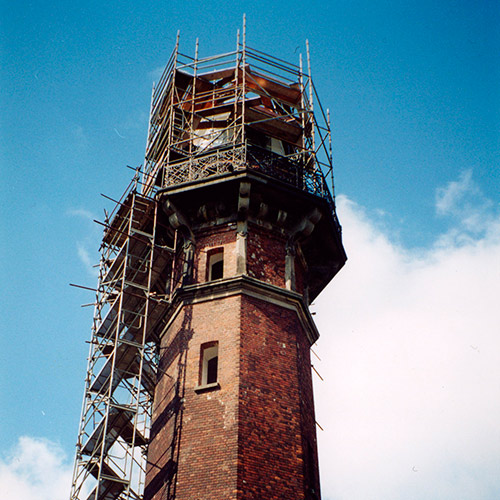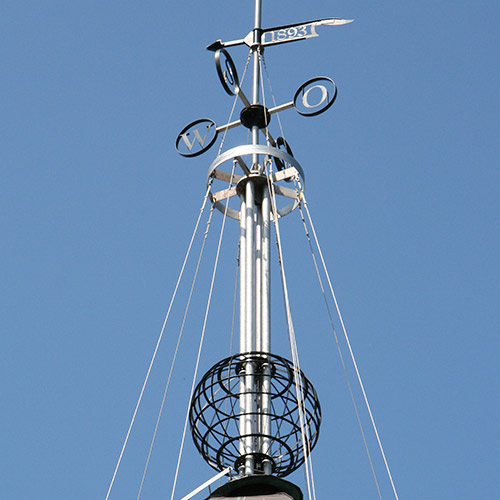
THE HISTORY OF THE GDAŃSK NOWY PORT LIGHTHOUSE
The lighthouse at Nowy Port is one of the most attractive and distinctive historical buildings of Gdańsk. It is also a building with an unusual and sometimes downright dramatic history, in which it became part of turbulent events experience by both the city and the world. For years it not only showed the way to the port of Gdańsk to ships sailing behind the Hel Sandspit, but also acted as an observation point for maritime pilots and as a time ball station. It is now the only privately-owned lighthouse in Poland and is open from spring to autumn, a place from which to admire a breath-taking view over the entire Bay of Gdańsk. This is its history.
From Wisłoujście to Brzeźno: the first Gdańsk lighthouse
From the fourteenth century Gdańsk gained increasingly in significance and became one of the most important trading centres in this part of Europe, thanks to its advantageous situation on the Baltic. To reinforce this position, care had to be taken over separation of the vessels navigating the entire bay and safe entrance to the port had to be ensured. This function was fulfilled by lighthouses. The first in Gdańsk was one at built at Wisłoujście in 1482. On the 24th September 1758 two new lighthouses came into service. The lower of these was a crane lighthouse. Coals were lit in a suspended basket known as Vulcan’s pan, and this was housed on a circular brick platform. The taller one was a walled tower of 20 metres in height and 10 metres in diameter, at the top of which coals were also lit in an iron basket.
Nowy Port and the new lighthouse
In the nineteenth century the land to the south of the Gdańsk harbour channel began to be settled by those who were working on the port that was then being built. This area and its port were called Neufahrwasser (Nowy Port). The necessity of having a higher light and of installing a stronger lens and the fact that the taller lighthouse had been in use for over 130 years led to the decision by the Gdańsk (then Danzig) authorities to build a new one. This was finished on 31st October 1893. The new lighthouse for Gdańsk was over seven metres taller than its predecessor. The octagonal tower, complete with a gallery and copper dome reached a height of 27.3 metres. In its silhouette a similarity has been discerned between the lighthouse and the most attractive representative of this type of building, the lighthouse on Lake Erie at Cleveland, Ohio, now no longer in existence.
Read on…
Fortunes of war
On the night of 31st August to 1st September 1939 the lighthouse was garrisoned by German soldiers with heavy machine guns, who were under orders to fire to hold in check those manning a Polish emplacement at Westerplatte on the other side of the channel. All forms of German armed forces had received the same command from Hitler: open fire at 4.45 am exactly on 1st September. The machine gunners in the lighthouse carried out this command, while the crew of the battleship Schleswig Holstein delayed by a full three minutes and started shelling Westerplatte at 4.48 am. It was those shots from the lighthouse at Gdańsk Nowy Port that in fact began the Second World War, a war that claimed 55 million lives. The lighthouse itself passed into world history.
Read on…
A cannon at Westerplatte
The history of the 75 mm field gun with which the Polish defenders of Westerplatte answered the fire of the German machine guns from the Nowy Port lighthouse is itself extraordinary. It was one of many thousand three-inch-calibre guns captured by the Prussian army in the victory over the Tsar’s army at Tannenberg in East Prussia in August 1914 at the outbreak of the First World War. As this particular gun had been won by the soldiers of the 128th Gdańsk Infantry Regiment, after the victory parade in September 1914 at Brama Wyżynna (the Upland Gate) of the city it was set up in the courtyard of the barracks in ul. Oliwska in Gdańsk Nowy Port (Danzig Neufahrwasser) as a symbol of the success and as a great trophy of war.
Read on…
Post-war fortunes
The situation of the lighthouse at Nowy Port when the war ended in 1945 did not look very promising. The lighthouse tower itself was in need of repairs and part of the light apparatus had also been destroyed. A light was installed with a new alternating feature: a two-second flash and a three-second pause. The continuing development of the Port of Gdańsk made it essential for a lighthouse to be built in a new place. Exactly ninety years after the Nowy Port Lighthouse had been commissioned its end approached. Just as towards the end of the nineteenth century it had replaced a smaller lighthouse which at that time did not fulfil structural requirements, so it was itself closed on 18th June 1984 with the opening of a larger modern lighthouse in the Port Połnocny (the Northern Port).
Read on…
A second life for the lighthouse
For the next dozen or more years the lighthouse at Nowy Port was closed. No one carried out any repairs and year by year rain, snow, ice, wind, sea salt and sulphur completed the work of destruction.
A Pole who had lived in Canada for thirty years, qualified engineer Stefan Jacek Michalak, found the building still in this state towards the end of the nineteen-nineties. He had begun to visit Poland after the fall of communism, and when he set eyes on the lighthouse at Nowy Port, neglected and ruined but still preserving its former beauty, he told himself, “That’s for me! The lighthouse must be mine!” He already knew then that he wanted it not only to enjoy it himself, but to be able to make it available to all to visit. His project was greeted very kindly, favourably and positively with enthusiasm, both by the Gdańsk city authorities and by the Gdynia Maritime Bureau (Urząd Morski w Gdyni), which is responsible for the lighthouse.
So it was that on 7th May 2004, after a ceremonial opening, the Gdańsk Nowy Port Lighthouse began a new lease of life as a historical monument to be visited and as a view point from which the glorious panorama of the Trójmiasto and the Bay of Gdańsk may be admired.
Read on…
The reconstruction of the time ball
An openwork time ball was also restored to the top of the lighthouse. The new construction is a faithful replica of its predecessor, although it has been made of high-quality stainless steel. The hoisting mechanism has been completely automated. The fall of the time ball marks punctually the hours of twelve noon and two, four and six in the afternoon according to the extremely accurate DCF77 time-keeping system created at the Physikalisch-Technische Bundesanstalt in Braunschweig, which is transmitted on the 77.5 kHz long-wave band by the radio station at Mainflingen near Frankfurt-am-Main, a time-pattern whose precision has been defined as one second of acceptable accumulated error in 200,000 years! During the summer season its fall four times daily is an unusual attraction, as there are only a few such time balls in operation in the world today. Most of them, it should be noted, reconstructed.
Read on…

